The dining room is often considered the heart of a home, where families and friends gather to share meals, stories, and laughter. It is a place where memories are made and bonds are strengthened. The play, "The Dining Room," written by A.R. Gurney, beautifully captures the essence of the dining room and the complex relationships that revolve around it. In this article, we will delve into the top 10 themes of this captivating play.Explore the Fascinating Theme of The Dining Room Play
Gurney's play is set in the dining room of a well-to-do American family and spans several decades. It offers a glimpse into the lives of the American middle class and highlights their struggles, aspirations, and values. The dining room serves as a microcosm for the larger societal changes happening at the time, making the play a poignant commentary on the American way of life.The Dining Room Play: An Insight into the American Middle Class
Family is at the core of "The Dining Room." The play explores the dynamics of various family relationships, from parent-child to sibling bonds. It shows how the dining room is a constant in a family, even as members come and go, and how it serves as a reminder of the shared history and experiences that bind them together.The Timeless Theme of Family
The dining room is a symbol of tradition and etiquette, but as the play progresses, we see these traditions being challenged and changed. The younger generation rebels against the strict rules and expectations of the older generation, leading to conflicts and tensions. This theme highlights the generational divide and the struggle to adapt to changing times.The Changing Times and Traditions
The dining room is also a witness to the ups and downs of love and marriage. In the play, we see different couples at different stages of their relationships, from newlyweds to long-married couples. The dining room serves as a backdrop for their joys, sorrows, and secrets, showcasing the complexities of romantic relationships.Love and Marriage in The Dining Room
The play also explores the influence of society on individual choices and actions. We see characters conforming to societal expectations and norms, even if it goes against their own desires. This theme highlights the pressure to fit in and the struggle to maintain appearances in a society that values status and image.The Impact of Society on Individuals
The dining room is also a battleground for power dynamics within families. We see how certain members hold more influence and control over others, and how this affects their relationships. The theme of power highlights the inequalities and hierarchies that exist within families and how they can lead to conflicts and tensions.The Power Dynamics in The Dining Room
The dining room is a place for conversation and communication, but in the play, we see how communication can also be a source of conflict. Misunderstandings, misinterpretations, and lack of communication lead to tensions and misunderstandings between characters. This theme highlights the importance of effective communication in maintaining healthy relationships.The Importance of Communication
The dining room also serves as a symbol of wealth and privilege. We see how characters from different social classes interact and the divide that exists between them. The play sheds light on the privileges and opportunities that come with belonging to a certain class, as well as the struggles and limitations faced by those from lower classes.Social Class and Privilege
As the play spans several decades, we see the dining room change along with the characters and their relationships. This theme of nostalgia highlights the bittersweet feelings that come with the passing of time and the longing for the past. The dining room serves as a reminder of the memories and moments that can never be relived.The Theme of Nostalgia
The Importance of a Well-Designed Dining Room in Your Home

Creating a Welcoming Atmosphere
 The dining room is often referred to as the heart of the home, as it is a place where families and friends gather to share meals and create memories. It is important to have a well-designed dining room that is not only aesthetically pleasing, but also functional and inviting. The theme of the dining room play is centered around the idea of creating a warm and welcoming atmosphere in this important space.
Warm and Inviting Colors:
One of the key elements in creating a welcoming atmosphere in the dining room is the use of warm and inviting colors. Rich, earthy tones such as deep reds, warm browns, and golden yellows can create a cozy and inviting feel. These colors can be incorporated through the use of paint, wallpaper, or even in the furniture and decor.
Functional Layout:
In addition to the visual appeal, the dining room should also have a functional layout. This means considering the flow of traffic in the room and ensuring that there is enough space for people to comfortably move around and sit at the table. The placement of furniture, lighting, and other elements should also be carefully considered to create a practical and efficient space.
The dining room is often referred to as the heart of the home, as it is a place where families and friends gather to share meals and create memories. It is important to have a well-designed dining room that is not only aesthetically pleasing, but also functional and inviting. The theme of the dining room play is centered around the idea of creating a warm and welcoming atmosphere in this important space.
Warm and Inviting Colors:
One of the key elements in creating a welcoming atmosphere in the dining room is the use of warm and inviting colors. Rich, earthy tones such as deep reds, warm browns, and golden yellows can create a cozy and inviting feel. These colors can be incorporated through the use of paint, wallpaper, or even in the furniture and decor.
Functional Layout:
In addition to the visual appeal, the dining room should also have a functional layout. This means considering the flow of traffic in the room and ensuring that there is enough space for people to comfortably move around and sit at the table. The placement of furniture, lighting, and other elements should also be carefully considered to create a practical and efficient space.
Mixing Old and New
 Another important aspect of the dining room play is the use of a mix of old and new elements. This can add character and charm to the room, making it feel more inviting and lived-in. For example, incorporating vintage pieces such as a rustic farmhouse table or a vintage chandelier can add a touch of nostalgia and warmth to the space.
Personal Touches:
Adding personal touches to the dining room can also make it feel more welcoming. This can include family photos, artwork, or sentimental items that hold special meaning. These personal touches not only add to the overall theme of the room, but also make it feel more unique and personalized.
Another important aspect of the dining room play is the use of a mix of old and new elements. This can add character and charm to the room, making it feel more inviting and lived-in. For example, incorporating vintage pieces such as a rustic farmhouse table or a vintage chandelier can add a touch of nostalgia and warmth to the space.
Personal Touches:
Adding personal touches to the dining room can also make it feel more welcoming. This can include family photos, artwork, or sentimental items that hold special meaning. These personal touches not only add to the overall theme of the room, but also make it feel more unique and personalized.
Bringing Nature Indoors
 The dining room play also emphasizes the use of natural elements to create a warm and inviting atmosphere. This can include incorporating plants, flowers, and other natural elements into the decor. Not only do these elements add a pop of color and texture, but they also bring a sense of the outdoors into the space, making it feel more natural and inviting.
Natural Light:
Natural light is another important aspect to consider in a well-designed dining room. It not only adds to the overall aesthetic of the space, but also creates a warm and inviting atmosphere. If possible, choose a dining room with large windows that allow plenty of natural light to flood in.
In conclusion, the theme of the dining room play highlights the importance of a well-designed dining room in creating a warm and inviting atmosphere in your home. By incorporating warm colors, a functional layout, a mix of old and new elements, personal touches, and natural elements, you can create a dining room that not only looks beautiful, but also feels welcoming and comfortable for all who gather there. So why not take some inspiration from the dining room play and transform your own dining room into a welcoming and inviting space for all to enjoy?
The dining room play also emphasizes the use of natural elements to create a warm and inviting atmosphere. This can include incorporating plants, flowers, and other natural elements into the decor. Not only do these elements add a pop of color and texture, but they also bring a sense of the outdoors into the space, making it feel more natural and inviting.
Natural Light:
Natural light is another important aspect to consider in a well-designed dining room. It not only adds to the overall aesthetic of the space, but also creates a warm and inviting atmosphere. If possible, choose a dining room with large windows that allow plenty of natural light to flood in.
In conclusion, the theme of the dining room play highlights the importance of a well-designed dining room in creating a warm and inviting atmosphere in your home. By incorporating warm colors, a functional layout, a mix of old and new elements, personal touches, and natural elements, you can create a dining room that not only looks beautiful, but also feels welcoming and comfortable for all who gather there. So why not take some inspiration from the dining room play and transform your own dining room into a welcoming and inviting space for all to enjoy?





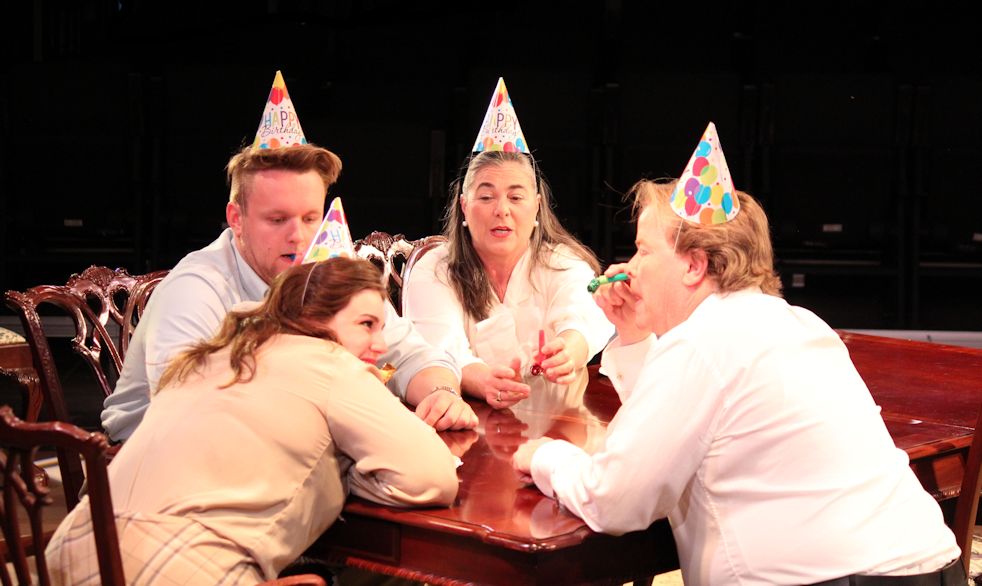










































:max_bytes(150000):strip_icc()/ScreenShot2018-03-26at2.37.07PM-5ac62f7a119fa800378a5046.png)






